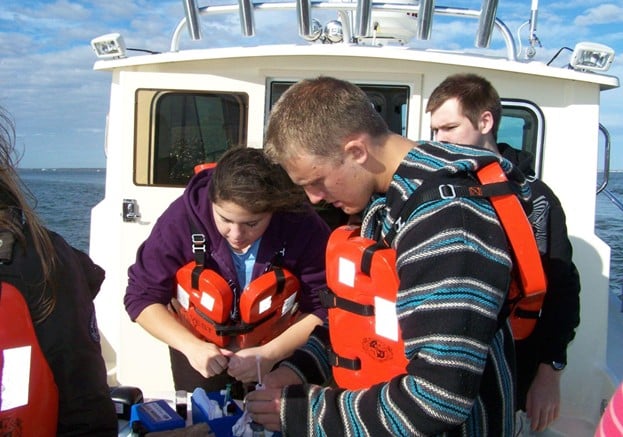Environmental science, as a subject, is easy to overlook, as it doesn’t demand a lot of attention, nor is it talked about a lot. But that doesn’t mean it’s not important or doesn’t have a long-term impact, because it does. There are a few individuals who make a difference, and John Wnek of New Jersey is one of the names that always come up.
A scientist, an educator, and a mentor whose focus always remained firmly rooted in applied fieldwork and community involvement, John Wnek of New Jersey is an individual who has always worked for environmental science and put forward his thoughts about it.
What makes his work so different from others isn’t just his research, but rather how he brings students into the center of that process. Not as spectators, but as active contributors. From the coastal edges of Barnegat Bay to estuarine mudflats and marshes, John Wnek of New Jersey has built a body of work that quietly proves a larger point: science becomes real when you get your boots muddy.
The Classroom Isn’t Always Indoors
As the longtime supervisor of science and research at the Marine Academy of Technology and Environmental Science (MATES) in Ocean County, John Wnek of New Jersey has turned coastal research into a foundational part of environmental education. And he’s done it without separating theory from practice.
His student teams are practically in the field and not just silent observers. They are active participants who track habitat, tag species, and also analyze population. This stems from a simple idea – if you want to understand an ecosystem, you have to be a part of it, whole and soul.
And for John Wnek of New Jersey, that means students aren’t just learning about terrapins or water quality but they’re generating original data and contributing to research with real ecological weight.
John Wnek of New Jersey Views Barnegat Bay as a Living Laboratory
Coastal New Jersey isn’t a place that is mentioned or talked about a lot, especially for environmental research, but a lot of it changed because of John Wnek of New Jersey. The Barnegat Bay watershed is one of the most changing natural areas on the East Coast. It is made up of dunes, marshes, estuaries, and human growth that all work together.
John Wnek has been in charge of long-term studies on the diamondback terrapin for almost twenty years. The diamondback terrapin is a species of salt marsh turtle that is constantly under threat from ecosystem loss and human influence.
His work with students and other experts has helped record not only the health of the populations, but also how the birds nest, the difficulties of conservation, and how well restoration efforts will work in the long run.
His collaborative efforts go beyond the school. As co-chair of the Diamondback Terrapin Working Group, John Wnek of New Jersey bridges education and conservation with purpose. This is not outreach for its own sake. It’s structured participation – designed to create continuity between classroom knowledge and field expertise.
Why Students Matter in This Equation
There are a lot of experienced experts who work in coastal areas. John Wnek’s plan is different because he believes that students should not only have a seat at the table, but also hold the pen.
Because he is the head of MATES and works part-time at Stockton University, he has created a program that makes sure students learn field practices early and often. Their first job is not as an intern. From the start, they are detectives. And before they leave, a lot of them have given talks at regional conferences or co-written papers that are published in journals.
It’s a quiet but clear challenge to the idea that “real” science is something you do later in life. John Wnek of New Jersey shows that’s not true.
Stay Local and Think Global
A lot of John Wnek’s work is very close to home. But it shows the bigger problem of how to balance growth with responsibility around the world.
By doing most of his study and teaching in the Barnegat Bay area, John Wnek of New Jersey shows that local action is the best way to solve big environmental problems like climate change, protecting species, and improving water quality. He’s making an effect that lasts longer by including the next generation in the process.
This method doesn’t need a huge fund or a world lab. It needs to be clear, consistent, and have a leader who knows that protection and teaching can and should go hand in hand.
The Quiet Influence of Continuity That John Wnek Possesses
In a field that is often looking for new things, John Wnek of New Jersey has quietly put consistency first. Years and years of study in the same environment. Partnerships that last through different governments. The education should change along with science, while still holding on to the same principles.
It might not make the news, but that level of regularity builds trust in the data, the school, and the students who will carry on the work.



